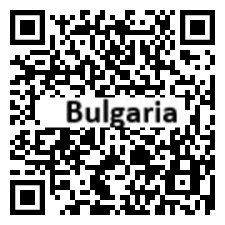Country Summary




Introduction
Background
The Bulgars, a Central Asian Turkic tribe, merged with the local Slavic inhabitants in the late 7th century to form the first Bulgarian state. Northern Bulgaria attained autonomy in 1878 and all of Bulgaria became independent from the Ottoman Empire in 1908. Bulgaria fell within the Soviet sphere of influence and became a People's Republic in 1946. Communist domination ended in 1990, when Bulgaria held its first multiparty election since World War II.
Geography
Area
total: 110,879 sq km
land: 108,489 sq km
water: 2,390 sq km
Climate
temperate; cold, damp winters; hot, dry summers
Natural resources
bauxite, copper, lead, zinc, coal, timber, arable land
People and Society
Population
6,873,253 (2022 est.)
Ethnic groups
Bulgarian 76.9%, Turkish 8%, Romani 4.4%, other 0.7% (including Russian, Armenian, and Vlach), other (unknown) 10% (2011 est.)
Languages
Bulgarian (official) 76.8%, Turkish 8.2%, Romani 3.8%, other 0.7%, unspecified 10.5% (2011 est.)
Religions
Eastern Orthodox 59.4%, Muslim 7.8%, other (including Catholic, Protestant, Armenian Apostolic Orthodox, and Jewish) 1.7%, none 3.7%, unspecified 27.4% (2011 est.)
Population growth rate
-0.67% (2022 est.)
Government
Government type
parliamentary republic
Capital
name: Sofia
Executive branch
chief of state: President Rumen RADEV (since 22 January 2017); Vice President Iliana IOTOVA (since 22 January 2017)
head of government: Prime Minister Gulub DONEV (since 2 August 2022); note - Prime Minister DONEV leads a caretaker government until snap elections are held on 2 October 2022
Legislative branch
description: unicameral National Assembly or Narodno Sabranie (240 seats; members directly elected in multi-seat constituencies by proportional representation vote to serve 4-year terms)
Economy
Economic overview
upper-middle-income EU economy; improving living standards and very robust economic growth; coal-based infrastructure; legacy structural vulnerabilities and widespread corruption; increasing Russian economic relations, particularly through energy trade
Real GDP (purchasing power parity)
$155.06 billion (2020 est.)
Real GDP per capita
$22,400 (2020 est.)
Agricultural products
wheat, maize, sunflower seed, milk, barley, rapeseed, potatoes, grapes, tomatoes, watermelons
Industries
electricity, gas, water; food, beverages, tobacco; machinery and equipment, automotive parts, base metals, chemical products, coke, refined petroleum, nuclear fuel; outsourcing centers
Exports
$39.27 billion (2020 est.)
Exports - partners
Germany 16%, Romania 8%, Italy 7%, Turkey 7%, Greece 6% (2019)
Exports - commodities
refined petroleum, packaged medicines, copper, wheat, electricity (2019)
Imports
$38.07 billion (2020 est.)
Imports - partners
Germany 11%, Russia 9%, Italy 7%, Romania 7%, Turkey 7% (2019)
Imports - commodities
crude petroleum, copper, cars, packaged medicines, refined petroleum (2019)
Exchange rates
leva (BGN) per US dollar -
Page last updated: Wednesday, November 16, 2022
